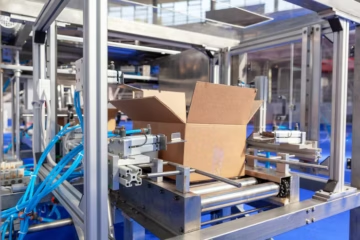Packaging machinery is a cornerstone of modern manufacturing, transforming raw materials into finished products ready for market. This article explores the innovations and diverse applications of packaging machinery, highlighting its significance in various industries.
The Evolution of Packaging Machinery
Packaging machinery has undergone significant transformations since its inception. Early machines were manual and labor-intensive, but advancements in technology have led to the development of automated and highly efficient systems. Today, packaging machinery integrates robotics, sensors, and AI to ensure precision, speed, and reliability.

Types and Functions of Packaging Machinery
Packaging machinery can be categorized based on its function and the type of product it handles. Some common types include:
- Filling Machines: These machines measure and dispense product into containers. They are essential in industries like food, beverages, and cosmetics.
- Sealing Machines: After filling, sealing machines close containers to prevent leakage and extend product shelf life. They come in various forms, such as heat sealers, clip sealers, and induction sealers.
- Wrapping Machines: Wrapping machines apply flexible packaging materials around products. They are used for items that require protection from dust, moisture, and physical damage.
- Form-Fill-Seal Machines: These machines automate the entire packaging process, from forming the container to filling and sealing it. They are highly efficient and reduce the need for manual handling.
- Labeling and Coding Machines: Labeling machines apply labels to products, while coding machines print information like batch numbers, expiration dates, and barcodes.
Innovations in Packaging Machinery
The packaging machinery industry is constantly evolving, driven by technological advancements and consumer demands. Here are some key innovations:
- Automation and Robotics: The integration of robotics and automation technology has revolutionized packaging machinery. Robots can handle delicate products, perform complex tasks, and work tirelessly without breaks.
- Smart Packaging: Smart packaging incorporates sensors, RFID tags, and other technologies to provide real-time information about product conditions. This helps ensure product safety and quality throughout the supply chain.
- Sustainability: Manufacturers are increasingly focusing on developing eco-friendly packaging machinery. This includes using biodegradable materials, reducing waste, and optimizing packaging to minimize environmental impact.
- Customization and Personalization: With the rise of e-commerce and direct-to-consumer sales, packaging machinery is evolving to support customization and personalization. Machines can now print unique labels, graphics, and messages for each product.

Applications Across Industries
Packaging machinery is used in a wide range of industries, each with unique requirements and challenges. In the food industry, packaging machinery ensures products remain fresh, safe, and appealing to consumers. In pharmaceuticals, it guarantees the integrity and safety of medications. In cosmetics and personal care, packaging machinery enhances product presentation and shelf appeal.
Conclusion
Packaging machinery is a vital component of modern manufacturing, driving efficiency, quality, and innovation. As technology continues to advance, the possibilities for packaging machinery will only grow. From automation and robotics to smart packaging and sustainability, the future of packaging machinery is bright and full of potential. Understanding the latest innovations and applications will help businesses stay competitive and meet the evolving needs of consumers.


